
Saab Delivers Another Seaeye Falcon ROV to Subsea Specialist
Saab UK has delivered its 600th Seaeye Falcon remotely operated vehicle (ROV) produced in Fareham, built for international subsea specialist DISA International.The latest addition joins DISA’s growing fleet of Saab Seaeye vehicles and contributes to DISA’s high-performance inspection and survey operations across Europe.The newly delivered Falcon is already at work supporting offshore wind energy operations in Germany, where it is conducting balance of plant inspections and general visual inspections (GVI).The vehicle will soon be deployed to further projects in the Netherlands and Belgium

UCO Grows Saab Seaeye Falcon ROV Fleet
Underwater Contracting (UCO), already owner of the world’s largest fleet of Saab Seaeye Falcon ROVs, has added to its pool through the purchase of five new machines to give it a total of 38 Falcon systems.The Aberdeen, Scotland-headquartered company, a provider of underwater services to the offshore energy, inspection, construction, and aquaculture markets, has expanded its fleet in response to major new multi-year contract wins across all sectors which will see it provide a range of services in Europe, North America and the Middle East.In addition, UCO has made significant investment in additiona

Seaeye Falcon Gets to Work in Japan's Offshore Wind Industry
Japan’s expanding offshore wind industry has added a further Seaeye Falcon underwater robot as a key operational resource for working in complex environments.Tokyo based systems provider Marimex says Japan’s wind power construction operators value the Falcon for being a compact and powerful robot that is ideally suited for shallow waters and strong currents.The small footprint of the metre-sized Falcon is also important for offshore energy operators as construction is carried out using fleets of small service vessels needed in shallow waters. Growth in Japan’s offshore wind power
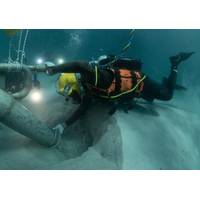
DST Taps Seaeye Falcon for Resarch, Offshore Energy
Italy’s DST (Deep Sea Technology) selected a 1000m-rated Saab Seaeye Falcon DR robotic vehicle to support archaeological research and offshore energy.The Seaeye Falcon DR will be employed by Naples-based DST, a commercial diving business, across its operations supporting offshore energy and maritime archaeology in both shallow and deep waters. The Falcon package includes a Tritech Super SeaPrince sonar and skid-mounted five function manipulator and rope cutter.“The Falcon DR will extend our operational capabilities,” says Alessandro Scuotto, CEO of DST. “It will operate in both

Ocean Dynamics Orders Deeper-rated Saab Seaeye Falcon ROV
Canadian company Ocean Dynamics has ordered a second, deeper-rated Saab Seaeye Falcon ROV for the inspection of instrumentation monitoring of the ocean around Canada’s northwest coast and First Nation coastal waters.The company already owns of a 300m-rated Seaeye Falcon.Ocean Dynamics’ President, Josh Chernov says he chose the new 1000m-rated fiber optic Falcon because it can accommodate HD cameras and has the flexibility for integrating more advanced technologies.Chernov says the Falcon has proved to be reliable and able to stay working for longer than other underwater vehicles —
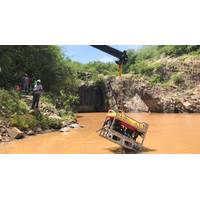
ASI Deploys Falcon ROV in African Croc Infested Waters
ASI Group deployed a Saab Seaeye Falcon ROV into crocodile-infested waters in East Africa, crocodiles which have been preventing manual inspection of remote inland underwater structures supporting East Africa’s power generation.The curious crocodiles soon lost interest in the Seaeye Falcon as the robot ventured into rivers and reservoirs, as well as inside structures and tunnels, to inspect and survey the wide variety of infrastructure supporting five power stations.A truck crane was used to remove covers and stoplogs, and to launch the Falcon into a variety of access locations. The crane’s
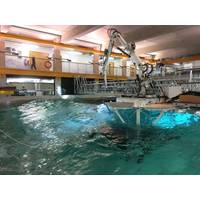
Tech File: A Robotic Reach in Offshore Wind
at the University of Plymouth’s COAST Laboratory, which has in-water testing enabling physical model testing with combined waves, currents and wind. This involved a research prototype with a three-part articulated arm. It was limited to a 100kg payload, which would support deployment of a Falcon ROV or Gavia AUV, says Andreas. “But it would be applied to any robotic crane arm,” says Andreas. “It could allow ship-to-ship transfer. The geometry can be adapted to any application and heavy objects.” I.e. the technology can also be applied to a bigger system such as Neptune
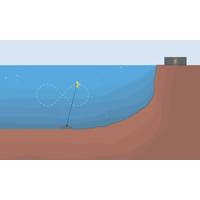
"Go Fly a Kite": Falcon ROV Flies Kites Underwater to Create Power
Flying kites underwater to generate electricity is an innovative renewable energy concept being installed in the Faroe Islands, supported by SJH Diving and its new Saab Seaeye Falcon. The subsea kite turbine is a unique concept created by developer Minesto to generate electricity in tidal streams and ocean currents using the principle of flying a stunt kite in the wind.By swooping through the water in a constant figure of eight motion on a tethered cable, the kite turbine accelerates through the water considerably faster than the actual flow speed.The electricity generated from a kite turbine is
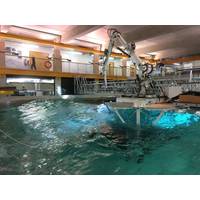
A Robotic Reach in Offshore Wind
at the University of Plymouth’s COAST Laboratory, which has in-water testing enabling physical model testing with combined waves, currents, and wind.This involved a research prototype with a three-part articulated arm. It was limited to a 100kg payload, which would support the deployment of a Falcon ROV or Gavia AUV, says Fechs. “But it would be applied to any robotic crane arm,” says Fechs. “It could allow ship-to-ship transfer. The geometry can be adapted to any application and heavy objects.” I.e. the technology can also be applied to a bigger system such as Neptune

 August 2025
August 2025





